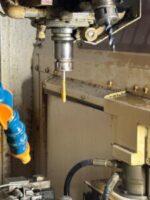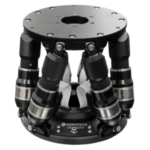Rust prevention in manufacturing
The shop floor and assembly line can be vulnerable places for in-process metal goods. Freshly machined metal is a magnet for flash corrosion—when going in and out of air-conditioned QC areas or enduring hot, humid days in parts of the shop that are not climate controlled. The key advantage of VpCI® packaging is that it is fast and easy to use with little mess—unlike the hassle and cleanup associated with greasy rust preventatives. It is also highly effective. VpCI® packaging comes in many shapes and sizes, all based on Vapor phase Corrosion Inhibitor chemistry, which only requires an enclosed space and a bare metal surface in order to be effective. Vapor phase corrosion Inhibitors emit out of their foundational VpCI® packaging material, diffuse throughout an enclosure, and adsorb (i.e., lightly adhere) on the metal, creating a protective molecular barrier that blocks corrosive reactions with moisture, oxygen, chlorides, or other harsh elements. When the enclosure is opened, VpCI® molecules begin to float away, typically requiring no further cleaning before the component can be used. Get Creative: Mix-and-Match packaging for rust defense VpCI® packaging comes in many forms, allowing manufacturers to create a tailored solution that best fits their corrosion protection needs. These materials include VpCI®-126 film and bags in many styles, CorShield® VpCI®-146 paper, and VpCI® emitting materials such as BioPad® and Cor-Pak® 8-MUL Pouches. Some examples of how parts can be protected between manufacturing stages are as follows: Line a production bin with a VpCI®-126 gusseted bag, fill with machined parts, and close the bag after each addition. Add a BioPad® if extra protection is needed. Sandwich layers of brake disks or flywheels between pieces of CorShield® VpCI®-146 Paper inside a bin Cover racks/carts of gears with CorrCap™ VpCI® Protective Covers (customized shower-cap style versions of VpCI®-126 for easy removal […]










